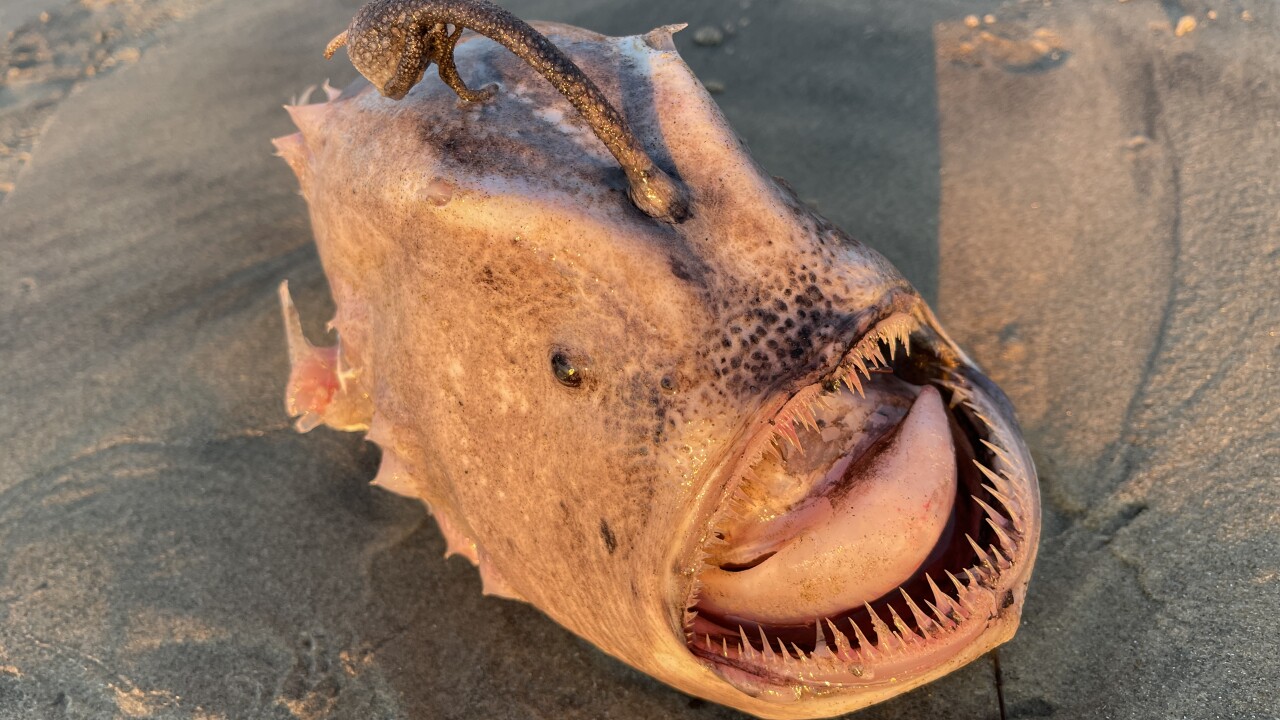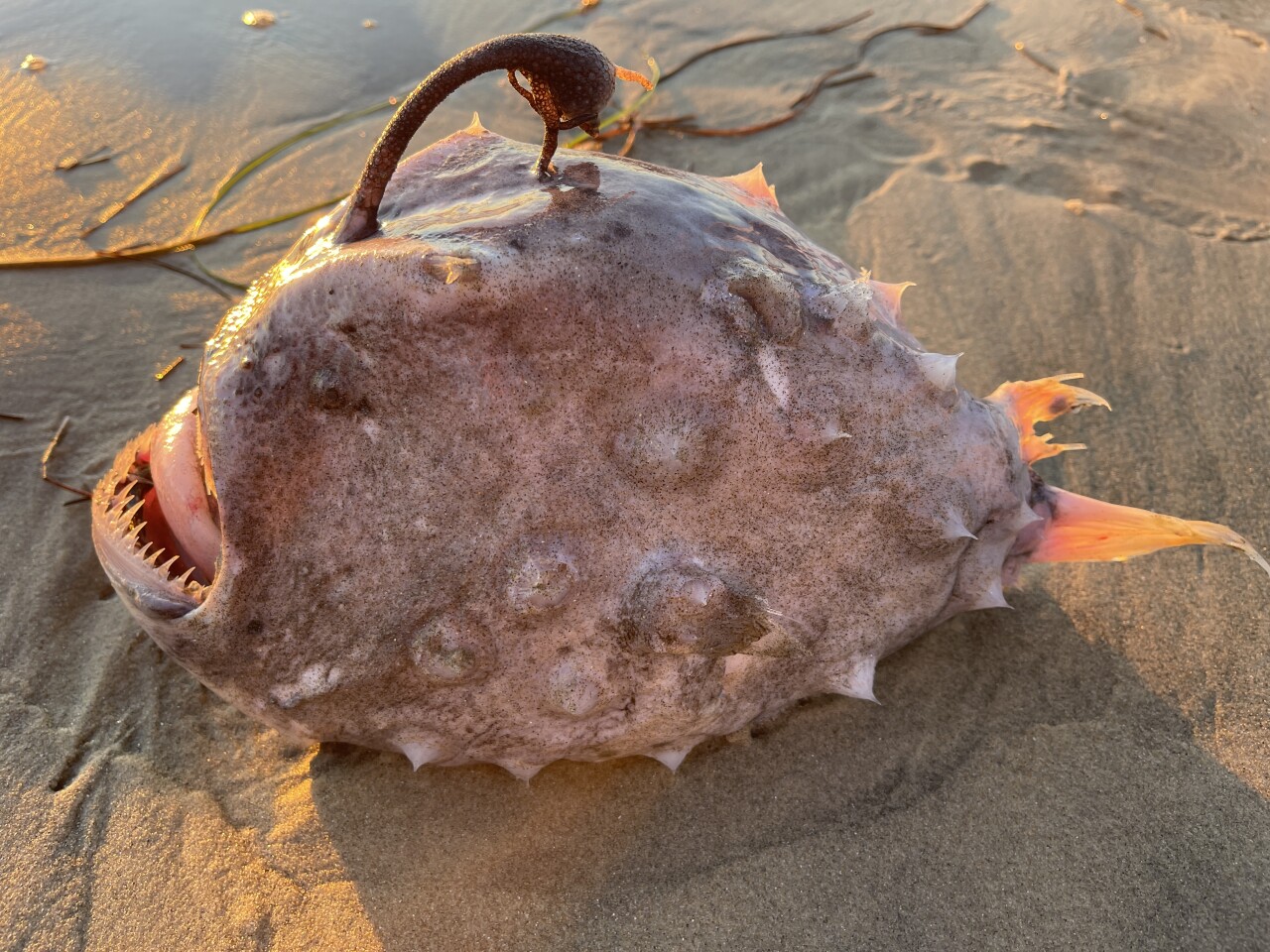Jay Beiler said he spotted this Pacific Footballfish, or Himantolophus sagamius, on Nov. 13 at around 4:40 p.m. on Blacks Beach in Torrey Pines.

SAN DIEGO (KGTV) — Many people have their speculations about the thousands of unknown species that swim in the unattainable trenches in the deep blue sea.
Some of those rare species have managed to find their way to shorelines in the San Diego area, and a beachgoer in North County came across a strange discovery when he spotted a scary-looking fish washed ashore at Black’s Beach in Torrey Pines nearly two weeks ago.
Jay Beiler says he was walking on the beach around 4:40 p.m. Saturday, Nov. 13 when he saw an odd-looking object on the beach. He initially thought it was a jellyfish from a distance, but as Beiler got closer, he noticed it was something far stranger.

According to experts, the Pacific Footballfish, or scientifically known as Himantolophus sagamius, usually lives in waters that are 3,000 feet deep.
The Scripps Institution of Oceanography says the last time a fish like this washed up in San Diego was 20 years ago in Dec. 2001 at Dog Beach in Del Mar, and this is the third known to wash up in California.
This anglerfish has been found in California, Japan, Hawaii, Ecuador, Chile, and the Philippines, but the first deep-sea anglerfish discovered was found on a beach in Greenland in 1833. This species is a close relative to Himantolophus groenlandicus, the Atlantic Footballfish.
 Jay BeilerJay Beiler said he spotted this Pacific Footballfish, or Himantolophus sagamius, on Nov. 13 at around 4:40 p.m. on Blacks Beach in Torrey Pines.
Jay BeilerJay Beiler said he spotted this Pacific Footballfish, or Himantolophus sagamius, on Nov. 13 at around 4:40 p.m. on Blacks Beach in Torrey Pines.
In the 1960s, a footballfish was found floating alive off Japan, and researchers were able to keep it alive in a tank for 8 days.
Experts say there are only 30 known specimens of this species.
During that time period, researchers noted the “fishing lure” on its head, called an “esca,” was continuously glowing and if they startled or poked the fish it would eject glowing goo from the lure. This is the only time anything like this has ever been reported from an anglerfish.
If anyone finds an unusual organism like this, they are advised to not take it home. Much of La Jolla is a Marine Protected Area and taking home organisms is prohibited.
Discoverers are asked to alert lifeguards or notify Scripps Institution of Oceanography to preserve the above rare fish species




